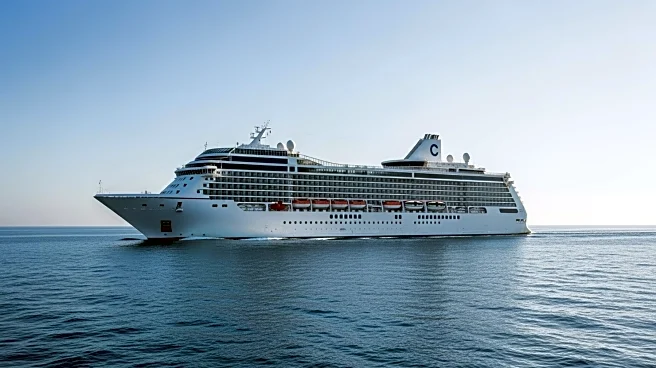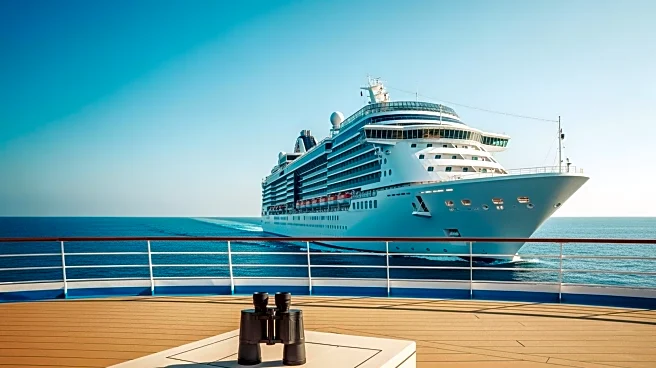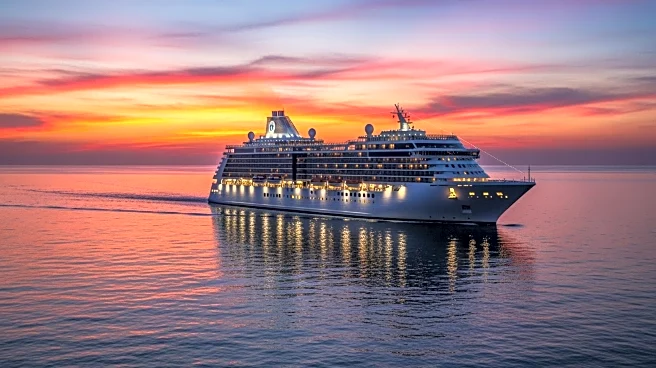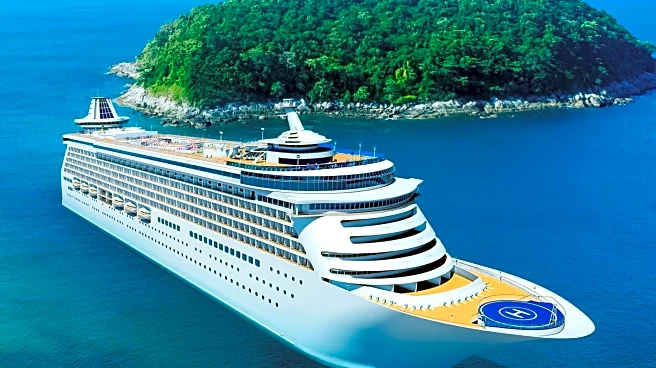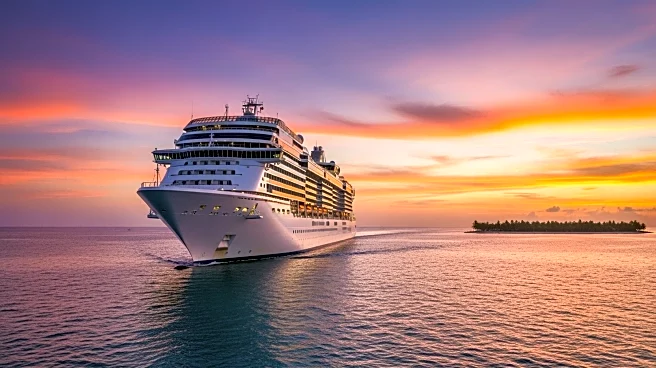What's Happening?
The cruise industry is experiencing a resurgence, with projections indicating a fourth consecutive year of record passenger volumes in 2026. According to AAA and Tourism Economics, the U.S. market is a significant contributor to this growth, with an expected
increase in American cruise passengers from 20.7 million in 2025 to 21.7 million in 2026. The Cruise Lines International Association (CLIA) forecasts a global total of 37.7 million cruise passengers for 2025, marking a nearly nine percent growth from the previous year. North America remains the top source market, showing a 13 percent increase in 2024 over 2023. Major U.S. ports like PortMiami are setting new records, further highlighting the industry's expansion.
Why It's Important?
The growth in the cruise industry signifies a robust recovery from the pandemic, with significant economic implications for U.S. ports and related businesses. The increase in passenger numbers boosts local economies, particularly in major embarkation ports such as Miami, Port Canaveral, and Galveston. The industry's expansion also reflects a growing demand for ocean cruises among U.S. travelers, with a high satisfaction rate reported by AAA. This trend supports job creation and investment in new cruise ships, with companies like Carnival, Norwegian, and Royal Caribbean placing large orders for new vessels, ensuring continued industry growth and innovation.
What's Next?
Cruise lines are planning new ship introductions through 2033, with more orders expected to follow. This expansion will likely lead to increased competition among cruise operators, potentially driving further innovation in services and destinations offered. The industry may also see a shift towards more sustainable practices as environmental concerns become more prominent. Additionally, the demographic trends highlighted by AAA suggest opportunities for targeted marketing strategies to attract different age groups and travel preferences.
Beyond the Headlines
The cruise industry's growth could have broader implications for environmental policies, as increased passenger numbers may lead to heightened scrutiny of the industry's ecological impact. There is potential for advancements in sustainable cruising technologies and practices, which could set new standards for the industry. Furthermore, the rise in ultra-luxury and expedition cruising indicates a shift in consumer preferences, potentially influencing future cruise offerings and destination choices.
